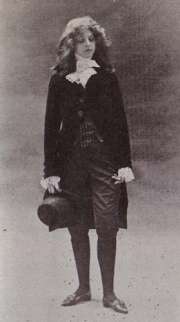Pagina: 1
A la Bien-Aimée
:
 Poezie 2006-08-29 (6772 afişări) Poezie 2006-08-29 (6772 afişări)
A la femme aimée
: Etudes et préludes
 Poezie 2006-08-21 (9963 afişări) Poezie 2006-08-21 (9963 afişări)
Bacchante triste
: Etudes et préludes
 Poezie 2006-08-21 (9139 afişări) Poezie 2006-08-21 (9139 afişări)
Chair des choses
: Sillages
 Poezie 2006-08-21 (7616 afişări) Poezie 2006-08-21 (7616 afişări)
Chanson
:
 Poezie 2006-08-29 (6697 afişări) Poezie 2006-08-29 (6697 afişări)
Essentielle
:
 Poezie 2006-08-29 (6449 afişări) Poezie 2006-08-29 (6449 afişări)
Fête d’Automne
:
 Poezie 2006-08-29 (6298 afişări) Poezie 2006-08-29 (6298 afişări)
Je connais un étang
:
 Poezie 2006-08-29 (5982 afişări) Poezie 2006-08-29 (5982 afişări)
Le Palais du Poète
:
 Poezie 2006-08-29 (5918 afişări) Poezie 2006-08-29 (5918 afişări)
Le Poète
:
 Poezie 2006-08-29 (6122 afişări) Poezie 2006-08-29 (6122 afişări)
Let the dead bury their dead
:
 Poezie 2006-08-29 (6520 afişări) Poezie 2006-08-29 (6520 afişări)
Mon Paradis
:
 Poezie 2006-08-29 (6533 afişări) Poezie 2006-08-29 (6533 afişări)
Ondine
:
 Poezie 2006-08-30 (7074 afişări) Poezie 2006-08-30 (7074 afişări)
Petit Poème érotique
:
 Poezie 2006-08-29 (7977 afişări) Poezie 2006-08-29 (7977 afişări)
Poème d’amour
:
 Poezie 2006-08-30 (6338 afişări) Poezie 2006-08-30 (6338 afişări)
Roses du soir
: Evocations
 Poezie 2006-08-21 (7763 afişări) Poezie 2006-08-21 (7763 afişări)
Ta royale jeunesse a la mélancolie
: Evocations
 Poezie 2006-08-21 (7958 afişări) Poezie 2006-08-21 (7958 afişări)
Pagina: 1 |
|

|
|
|
|
Biografie Renée Vivien
Renée Vivien, born Pauline Mary Tarn (11 June 1877 - 18 November 1909) was a British poet who wrote in the French language.[1][2] She took to heart all the mannerisms of Symbolism, as one of the last poets to claim allegiance to the school. Her compositions include sonnets, hendecasyllabic verse, and prose poetry.
Vivien was born in London, England to a wealthy British father and an American mother from Jackson, Michigan. She grew up in Paris and London. Upon inheriting her father's fortune at 21, she emigrated permanently to France.
In Paris, Vivien's dress and lifestyle were as notorious among the bohemian set as was her verse. She lived lavishly, as an open lesbian, and carried on a well-known affair with American heiress and writer Natalie Clifford Barney. She also harbored a lifelong obsession with her closest childhood friend and neighbor, Violet Shillito – a relationship that remained unconsummated. In 1900 Vivien abandoned this chaste love, when the great romance with Natalie Barney ensued. The following year Shillito died of typhoid fever, a tragedy from which Vivien, guilt-ridden, would never fully recover.
Vivien was cultivated and very well-traveled, especially for a woman of the late Victorian and Edwardian periods. She wintered in Egypt, visited China, and explored much of the Middle East, as well as Europe and America. Contemporaries considered her beautiful and elegant, with blonde hair, brown eyes flecked with gold, and a soft-spoken androgynous presence. Before the manifestations of illness, she was well-proportioned and fashionably slender. She wore expensive clothes and particularly loved Lalique jewelry.
Her Paris home was a luxurious ground-floor apartment at 23, avenue du Bois de Boulogne (now 23, avenue Foch) that opened onto a Japanese garden. She purchased antique furnishings from London and exotic objets d'art from the Far East. Fresh flowers were abundant, as were offerings of Lady Apples to a collection of shrines, statuettes, icons, and Buddhas.
|





